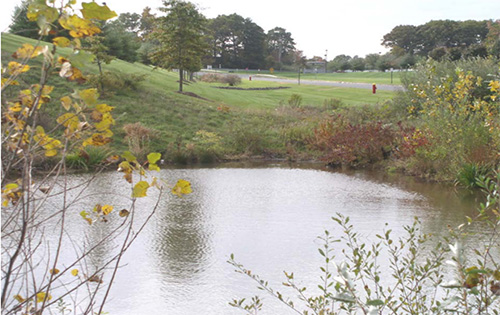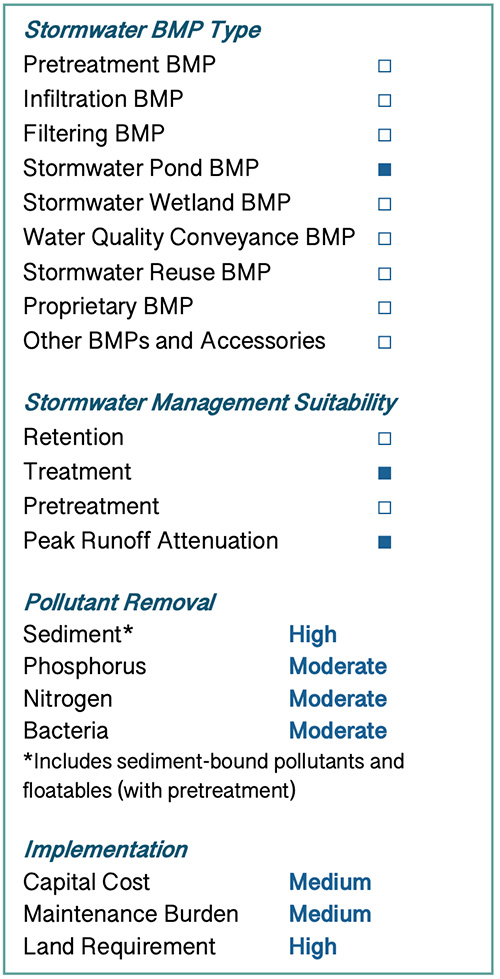Stormwater ponds are designed to retain a permanent pool of water that provides treatment for the water quality storm event and peak runoff attenuation for larger storms. This section addresses four types of stormwater ponds:
- Wet Pond
- Micro pool Extended Detention Pond
- Wet Extended Detention Pond
- Multiple Pond System
Stormwater is treated primarily through sedimentation, as suspended particles and attached pollutants settle to the bottom of the pond. Stormwater ponds can also reduce soluble pollutants in stormwater discharges by adsorption to sediment, bacterial decomposition, and the biological processes of aquatic and fringe wetland vegetation.
The key to maximizing the pollutant removal effectiveness of stormwater ponds is maintaining a permanent pool of water. To achieve this, the bottom of stormwater ponds should be located below the seasonal high groundwater table or should have a sufficiently large contributing drainage area and an impermeable liner if located in permeable soils. The pool typically operates on the instantaneously mixed reservoir principle where incoming water mixes with the existing pool and undergoes treatment through sedimentation and other processes. When the existing pool is at or near the pond outlet or when the primary flow path through the pond is highly linear, the pond may act as a plug flow system in which incoming water displaces the permanent pool, which is then discharged from the pond. In this process, a portion of the “new” polluted runoff enters the pond as the “old” treated water is discharged from the pond, thereby allowing treatment of the Water Quality Volume (WQV). When designed in an on-line configuration, stormwater ponds can also be sized to treat and provide peak runoff attenuation for storms larger than the water quality storm event.
The permanent pool of a stormwater pond reduces the velocity of incoming water to prevent resuspension of particles and promote settling of newly introduced suspended solids. The energy dissipating and treatment properties of the permanent pool are enhanced by aquatic vegetation, which is an essential part of the stormwater pond design. In contrast, a dry extended detention basin, which has no permanent pool, is not suitable for stormwater treatment due to the potential for resuspension of accumulated sediment by incoming storm flows during the early portion of a storm event when the basin is empty.
Stormwater ponds do not provide sufficient retention or runoff volume reduction through infiltration or other processes and therefore cannot be used to meet the Standard 1 retention performance criterion of this Manual.

